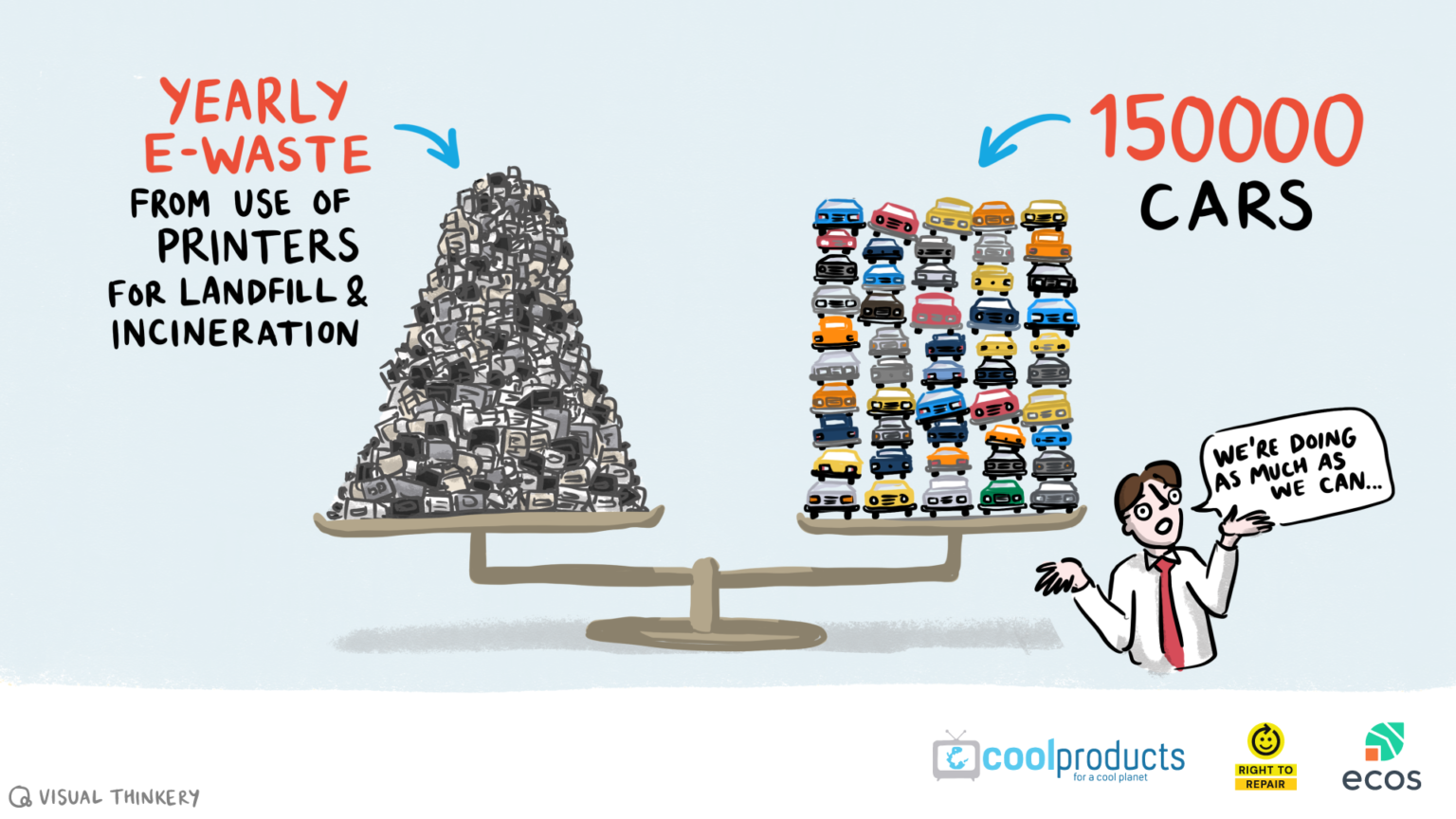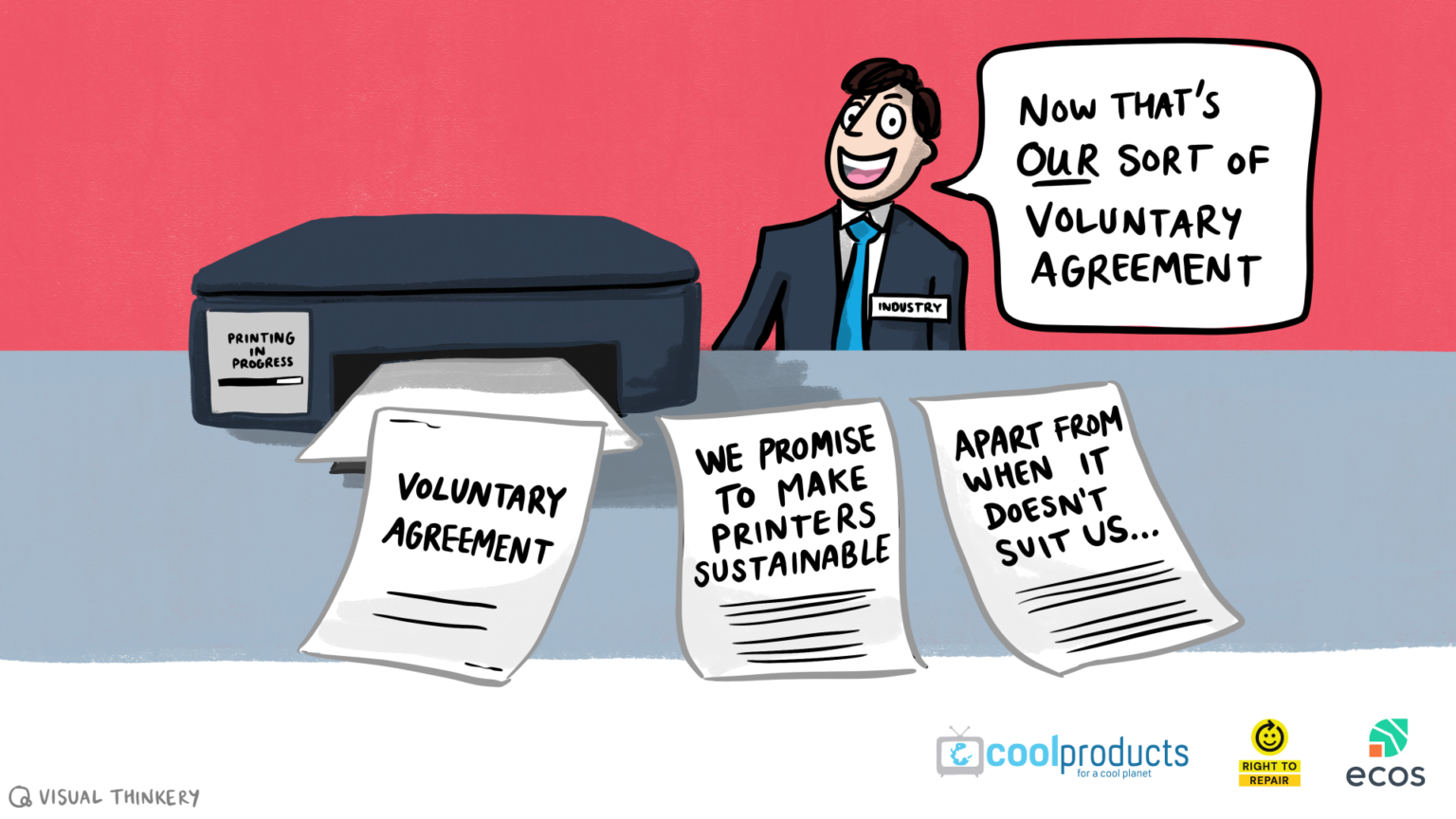After much ink spilt, the EU is about to crack down on made-to-break printers
Small electrical devices are the focus of this year’s International E-Waste Day, taking place today, on 14 October. It is a perfect day to celebrate that the EU will soon develop a regulation for printers – a product at the origin of countless headaches. The lack of rules results in thousands of tonnes of printers and cartridges turning into waste too early every year.

In a few years, made-to-break printers will simply not be available on the EU’s market. The bloc has (finally!) started a process to establish mandatory minimum requirements for printers, which will likely cover features such as repairability, durability, and energy efficiency. The European Union would be the first place in the world where printer manufacturers would be obliged to respect certain sustainability rules before placing their products on the market.
Printers have been on the radars of officials drafting ecodesign policies for years now. Today, some 80% of imaging devices are replaced by users within the first three to four years after purchase.
So far printers have escaped EU ecodesign and energy labelling regulations. Instead, manufacturers have signed a number of voluntary agreements, which proved to be, unfortunately, highly ineffective.
Thankfully, the Commission has answered our demands and promised to regulate this product in its latest Ecodesign and Energy Labelling Working Plan 2022-2024.
This promise has materialised in a recently-announced plan to launch a public consultation in the summer of 2023, focusing on the environmental impact of imaging equipment, including consumables. Also, next year, the Commission’s Joint Research Center expects to publish a preparatory study that will analyse the environmental impact of printers and provide policy suggestions.

The end of make-to-break printers… will depend on the small print
Establishing ecodesign rules could mean that the age of planned obsolescence in printers is over. Take ink cartridges, a continuous source of frustration. Requirements will hopefully ensure they are designed to be reused and refilled, including by independent refurbishers.
The end of voluntary agreements will be a leap toward sustainable printers – but the process will take a couple of years of negotiations. A lot of critical small print will determine whether regulations are robust enough to truly end planned obsolescence.
As a starting point, we hope that requirements will be more ambitious than those that have recently been proposed for phones. We need better protection of consumers’ right to repair, as well as more challenging energy-efficiency and durability requirements. Only with the right requirements in place will we ensure that printers are made to last longer, and that everyone is able to repair, reuse, and upgrade their devices easily. At the end of the road, when a printer cannot be used any longer, we should be able to recycle them easily and efficiently.
In Europe, it is estimated that a staggering 60 to 70% of all cartridges end up in landfills or are incinerated after a single use. A further 10-15% is collected and processed by companies, and the rest is refilled or remanufactured. Of the cartridges returned to manufacturers, less than 3% are reused, and while around 75% of the materials are recycled into new products, a number of producers reportedly incinerate the majority of their returned cartridges. All this needs to change before we can celebrate a win for the planet.
Printers and cartridges can be made to last – but only the right requirements can keep us from pointlessly wasting our ink… and countless tonnes of the planet’s precious resources.

 By
By  By
By 
